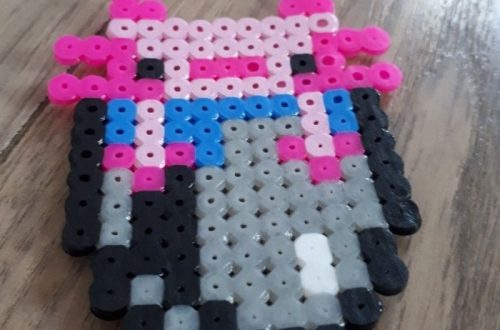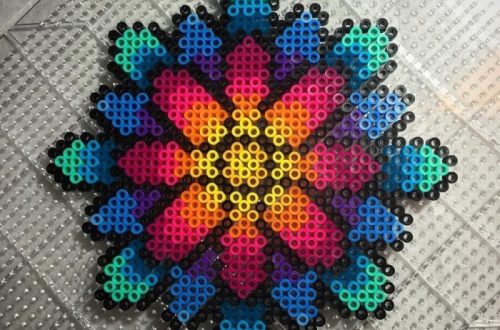Part 1: Understanding Oil Pastels
Oil pastels are a versatile and vibrant medium that can be used to create stunning drawings. Here are two key points to understanding the characteristics of mastering pastels:
1. Unique composition:
Oil pastels are a versatile medium made with pigments, wax, and a non-drying oil binder. The combination creates a creamy and smooth texture, perfect for effortless blending and layering. This makes them a preferred choice for artists seeking to create rich and vibrant colors in their artwork. The unique composition of oil pastels provides artists with the ability to create stunning and dynamic effects with ease.

2. Versatility:
Oil pastels are a versatile and diverse artistic medium that offers a wide range of creative possibilities. The rich and vibrant colors can be used to create bold and expressive works of art, while the creamy texture allows for smooth and effortless blending.
One of the great benefits of oil pastels is their compatibility with a variety of surfaces. Whether it’s paper, canvas, or wood, these pastels can be applied with ease, allowing artists to experiment and explore different techniques and effects.
Furthermore, the ability to combine oil pastels with other media, such as acrylic or watercolor, opens up even more opportunities for artistic expression. By layering and mixing different materials, artists can create unique and dynamic artworks with depth and dimension.
Whether you’re new to art or an experienced artist, oil pastels provide a versatile and accessible medium for unleashing creativity and bringing your artistic visions to life. With their vibrant colors, creamy texture, and compatibility with different surfaces and media, oil pastels offer endless possibilities for creating stunning works of art.
Part 2: Basic Techniques for Using Oil Pastels
To master oil pastels and create vibrant drawings, it’s essential to learn and practice some basic techniques. Here are two important techniques to get you started:
1. Layering:
Layering is an essential technique that allows artists to achieve a wide range of colors and effects with oil pastels. The ability to layer colors enables artists to create rich, vibrant, and complex hues that may not be achievable with a single color alone. Starting with a light base layer allows for the gradual buildup of color, adding depth and dimension to the artwork.
Once a base layer is laid down, additional layers of oil pastels can be added to enhance and intensify the colors. By carefully blending each layer, either with a blending stump, your finger, or other blending tools, the transitions between colors can be seamlessly merged. This results in a smooth and professional finish. This process of layering and blending allows for the creation of intricate details and subtle variations in color. It adds depth and visual interest to the artwork.
Moreover, layering also allows for the creation of special effects and textures. It also allows the ability to create subtle shading and highlights. Whether it’s creating a realistic landscape, a detailed portrait, or a vibrant abstract piece, the layering technique with oil pastels offers endless opportunities for artists to explore and experiment with color, depth, and expression. Mastering the art of layering can greatly enhance the quality and visual impact of oil pastel artworks. This makes it an indispensable skill for artists working with this versatile medium.

2. Blending:
Blending is an essential technique for creating smooth and seamless transitions between colors. To blend oil pastels, use a blending stump, cotton swab, or your finger to gently blend the edges of different colors together. This technique can be used to create gradients, soften harsh lines, and add a sense of depth and dimension to your drawings.
Part 3: Advanced Techniques for Oil Pastel Drawings
Once you have mastered the basic techniques, you can explore more advanced techniques to take your oil pastel drawings to the next level. Here are two advanced techniques to consider:
1. Sgraffito:
Sgraffito is a fascinating and versatile technique that adds a whole new dimension to oil pastel artwork.
By using tools such as a palette knife, a stylus, or even a simple toothpick, artists can scratch or scrape away layers of oil pastel. This reveals the underlying colors or creates intricate patterns and textures. This process adds visual interest and depth to drawings. It also creates unique and eye-catching effects that can’t be achieved through traditional layering and blending alone.
The sgraffito technique allows artists to create contrasts and highlights, bringing attention to specific areas of the artwork. It adds a sense of dynamism. When applied strategically, the scratched or scraped areas can reveal different colors or tones, adding complexity and depth to the composition. Additionally, artists can use sgraffito to create fine details, intricate designs, or textural elements. This adds a tactile and captivating quality to their artworks.
Furthermore, the use of sgraffito can also serve as a way to refine and adjust the composition. This allows artists to make corrections or add finer details without having to completely redo a section of their artwork. This makes it a valuable tool for artists looking to add a personal touch and unique flair to their oil pastel creations.
2. Impasto:
Impasto is a technique commonly associated with mastering oil pastels, but it can also be used with oil pastels to create a textured and three-dimensional effect. By applying thick layers of oil pastel to your surface and using a palette knife or other tool to manipulate the medium, you can create bold and expressive marks that add a tactile quality to your drawings.
Part 4: Tips for Mastering Oil Pastels
To truly master oil pastels and create vibrant drawings, it’s important to keep practicing and experimenting with different techniques. Here are two additional tips to help you improve your skills:

1. Experiment with different surfaces:
Experimenting with different surfaces for oil pastel artwork can open up new creative possibilities and allow artists to achieve unique effects. Each surface, whether it’s paper, canvas, or boards, offers distinct characteristics that can affect the overall look and feel of the artwork. By testing different surfaces, artists can discover which one best complements their style and preferences.
When using paper for oil pastel artwork, consider trying different weights and textures. Heavyweight papers can handle multiple layers of oil pastels without buckling, while smoother textures may result in more uniform, blended effects. Conversely, textured papers can add depth and character to the finished piece. Additionally, canvas provides a sturdy and versatile surface for oil pastel work, allowing for both bold strokes and delicate details. Boards, on the other hand, provide a solid and rigid support, which may be preferred for detailed and intricate work.
It’s important to note that different surfaces may require additional preparation to ensure the longevity of the artwork. For instance, canvas and boards may need to be primed with gesso to create a suitable surface for oil pastels. Paper may benefit from the use of fixatives to protect the finished artwork from smudging and dust. Artists should also consider the archival quality of the surfaces to ensure the longevity of their creations.
2. Use a fixative to protect your work:
Once you have completed a drawing with mastering oil pastels, it’s essential to protect it with a fixative. This will prevent smudging and preserve the colors. A fixative is a clear, protective spray that can be applied to the surface of your drawing to seal the pastel and prevent the colors from rubbing off. Be sure to use a fixative specifically designed for oil pastels. Follow the instructions carefully to ensure the best results.
In conclusion, mastering oil pastels and creating vibrant drawings requires dedication, practice, and a willingness to experiment with different techniques and surfaces. By understanding the unique characteristics of oil pastels, learning and practicing basic and advanced techniques, and following some essential tips, you can take your oil pastel drawings to new heights. This will allow you to create stunning and dynamic artworks. Whether you’re a beginner or an experienced artist, oil pastels offer endless possibilities for creating vibrant and expressive drawings. These are sure to captivate viewers.





